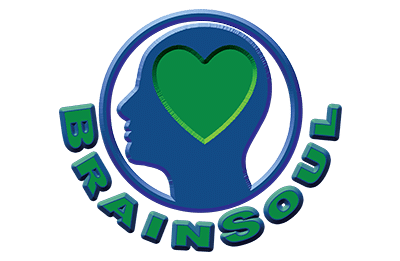Have you ever wondered why focusing on homework feels impossible one moment, but scrolling on your phone for hours feels effortless? Attention-deficit/Hyperactivity Disorder is one of the most common neurodevelopmental disorders affecting teenagers today, yet it is often misunderstood. For many teens, ADHD is not about being lazy or careless, but about a brain that is wired to think, process, and react differently. These differences can make focusing in school, managing emotions, and staying organized uniquely challenging. As we know, adolescence is already a period of rapid brain development, change, and vulnerability, which means ADHD can show up in powerful and sometimes surprising ways, potentially impacting adulthood. Understanding how ADHD interacts with the teenage brain is key to building empathy, breaking down stigma, and supporting students who learn and thrive differently.
ADHD is a developmental disorder characterized by a pattern of inattention, hyperactivity, and impulsivity. Especially during childhood, these behaviors are commonly observed some of the time. However, people with ADHD display these behaviors more frequently across multiple situations over their entire lives. ADHD diagnoses, especially among children, have been rapidly increasing and carry lasting effects on cognition, learning, and development into adolescence and adulthood. Based on parent-report data from the National Survey of Children’s Health, the prevalence of children aged 4-17 ever diagnosed with ADHD by a health care provider increased by 42% between 2003 and 2011, with males having consistently higher numbers than females. Though ADHD is often overlooked in childhood, its effects take hold in harmful ways during adolescence, affecting academic achievement, social interactions, and emotional stability.
In teens, ADHD becomes an additional obstacle to typical high school challenges: classes become harder, friend groups become more frustrating, and the pressure to succeed becomes more overwhelming. The disorder makes it difficult for students to focus on tests, organize homework, and stay on task when it’s crucial. These students have support services like specialized tutors or are recipients of extra time on assessments. ADHD does not limit its effects to academic obligations, as it extends to the social realms that teenagers depend on. This happens because adolescents with ADHD may impulsively speak or act in ways that can be misunderstood, which can result in being excluded, bullied, or even becoming bullies to others. Most commonly, adolescents with ADHD may have impaired social and communication skills that restrict their ability to pick up on important social cues, sustain good judgment, and even sit still. The impulsivity of ADHD extends to emotional functioning, resulting in greater emotional fluctuations that create poor emotional regulation and difficulty in coping with frustration, depression, and rage. Research also shows that teenagers with ADHD tend to engage in risky behavior earlier than typical teenagers, including the use of cigarettes, alcohol, illicit drugs, and even participating in unsafe sexual habits. Besides the social, academic, and cognitive realms that ADHD damages, the disorder takes a notable toll on the physical well-being of those affected.
With the proper understanding of how ADHD manifests itself in adolescent experiences, parents and school systems can help teenagers with ADHD thrive academically, navigate friendships, and handle their emotions in healthy ways. It’s extremely important for parents to ensure that their teenager has access to testing accommodations, tutors, and other forms of academic support to help with their disability while creating an environment catered to them. As far as peer relationships and risky behaviors, parents should keep a close watch on their children’s whereabouts while creating a healthy relationship. This healthy relationship is very meaningful in both protecting and understanding a child through the lens of ADHD, as it creates a safe space for teens to open up and for parents to educate their children on the risks of their actions. Encouraging children to participate in extracurricular activities offers them social opportunities in a structured environment and minimizes unstructured and unsupervised free time. These are just general recommendations for parents and school systems in understanding students with ADHD, as the actual resolutions to ADHD include PTBM, FDA-approved medications, and behavioral classes. PTBM, or Parent Training in Behavior Management, is a non-pharmacological treatment for ADHD that aims to improve behavior and reduce the impact of symptoms by providing parents with evidence-based strategies and techniques for managing their child’s behavior. Though behavioral therapy and medications have been shown to reduce behaviors associated with ADHD and to improve function, both therapies have high care costs, prominent levels of family and school involvement, or adverse side effects. However, training approaches that are focused on school functioning skills have consistently revealed benefits for adolescents, with the greatest benefits occurring when treatment is continued over an extended period of time and target behaviors are directly applicable to the adolescent’s daily functioning.
ADHD in the teenage brain is not a weakness, but a difference. For every challenge with focus, organization, or impulse control, there is also creativity, energy, and resilience. What teens with ADHD need most is not judgment, but understanding from teachers, parents, and especially their peers. By learning how ADHD shapes the developing brain, we can shift the conversation from blame to support, and from stigma to strength. ADHD may change how the teenage brain works, but it doesn’t change how far it can go.
References:
https://childmind.org/article/adhd-in-teenagers/
https://pmc.ncbi.nlm.nih.gov/articles/PMC7067282/
https://www.nimh.nih.gov/health/statistics/attention-deficit-hyperactivity-disorder-adhd
